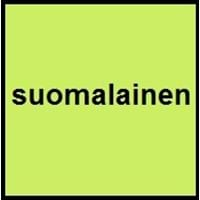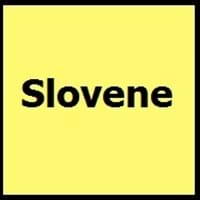Finnish and Slovene
Countries
European Union, Finland
European Union, Slovenia
National Language
Estonia, Finland, Norway, Russia, Sweden
Austria, Croatia, Hungary, Italy, Slovenia
Second Language
Estonia
Not spoken in any of the countries
Speaking Continents
Asia, Europe
Europe
Minority Language
Republic of Karelia, Russian Federation, Sweden
Austria, Hungary, Italy
Regulated By
Institute for the Languages of Finland
Slovenian Academy of Sciences and Arts
Interesting Facts
- Finnish language has adopted many words from Iranian, Turkic, Baltic, Germanic and Slavic languages.
- In Finnish language, there are no articles or grammatical gender.
- The Freising Monuments is the oldest preserved records of written Slovene from 10th century.
- The first Slovene book was printed in 1550.
Similar To
Estonian and Livonian Languages
Serbo-Croatian
Derived From
Not Available
Not Available
Alphabets in
Finnish-Alphabets.jpg#200
Slovene-Alphabets.jpg#200
Writing Direction
Left-To-Right, Horizontal
Left-To-Right, Horizontal
How Are You?
Mitä kuuluu?
Kako se imate?
Good Night
hyvää yötä
Lahko noč
Good Evening
Hyvää iltaa
Dober večer
Good Afternoon
Hyvää iltapäivää
Dober dan
Good Morning
Hyvää huomenta
Dobro jutro
I Love You
Minä rakastan sinua
Ljubim te
Excuse Me
Anteeksi
Oprostite
Dialect 1
Colloquial Finnish
Prekmurje Slovene
Where They Speak
Finland
Hungary, Slovenia
How Many People Speak
Not Available
Where They Speak
Finland, Rauma
Italy
Dialect 3
Meänkieli
Styrian
Where They Speak
Finland, Sweden
Slovenia
How Many People Speak
Not Available
Speaking Population
Not Available
Not Available
Second Language Speakers
Not Available
Native Name
suomi / suomen kieli
Not available
Alternative Names
Suomi
Slovenian, Slovenscina
French Name
finnois
slovène
German Name
Finnisch
Slowenisch
Pronunciation
[ˈsuomi]
[slɔˈʋèːnski ˈjɛ̀ːzik], [slɔˈʋèːnʃt͡ʃina]
Ethnicity
ethnic Finns
Slovenes
Language Family
Uralic Family
Indo-European Family
Subgroup
Finno-Ugric
Not Available
Branch
Finnic
Not Available
Early Forms
Proto-Finnic language
No early forms
Standard Forms
standard Finnish
Slovene
Signed Forms
Signed Finnish
Not Available
Scope
Individual
Individual
ISO 639 6
Not Available
Not Available
Glottocode
finn1318
slov1268
Linguasphere
No data available
53-AAA-f
Language Type
Living
Living
Language Linguistic Typology
Subject-Verb-Object
Not Available
Language Morphological Typology
Agglutinative, Synthetic
Fusional
All Finnish and Slovene Dialects
Most languages have dialects where each dialect differ from other dialect with respect to grammar and vocabulary. Here you will get to know all Finnish and Slovene dialects. Various dialects of Finnish and Slovene language differ in their pronunciations and words. Dialects of Finnish are spoken in different Finnish Speaking Countries whereas Slovene Dialects are spoken in different Slovene speaking countries. Also the number of people speaking Finnish vs Slovene Dialects varies from few thousands to many millions. Some of the Finnish dialects include: Colloquial Finnish, Rauma. Slovene dialects include: Prekmurje Slovene , Resian. Also learn about dialects in South American Languages and North American Languages.
Finnish and Slovene Speaking population
Finnish and Slovene speaking population is one of the factors based on which Finnish and Slovene languages can be compared. The total count of Finnish and Slovene Speaking population in percentage is also given. The percentage of people speaking Finnish language is Not Available whereas the percentage of people speaking Slovene language is Not Available. When we compare the speaking population of any two languages we get to know which of two languages is more popular. Find more details about how many people speak Finnish and Slovene on Finnish vs Slovene where you will get native speakers, speaking population in percentage and native names.
Finnish and Slovene Language Codes
Finnish and Slovene language codes are used in those applications where using language names are tedious. Finnish and Slovene Language Codes include all the international language codes, glottocodes and linguasphere.





